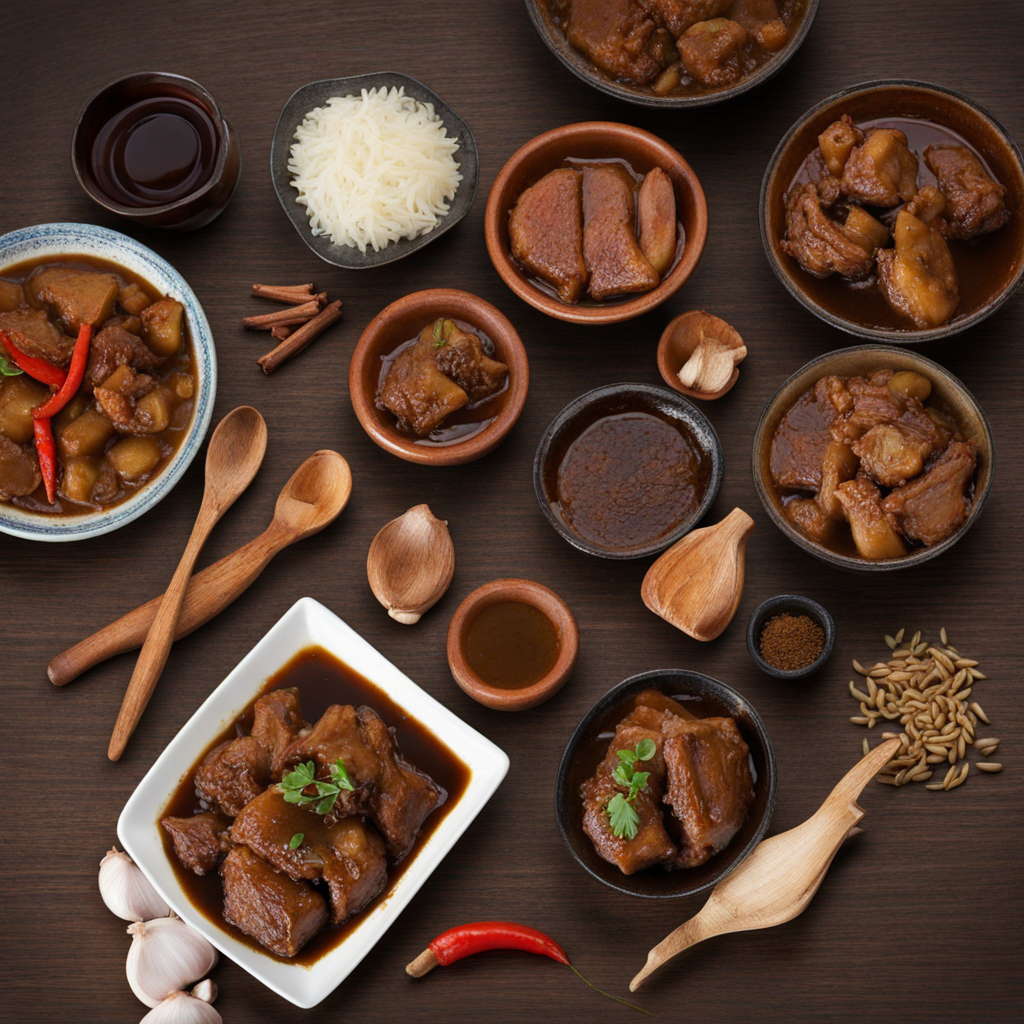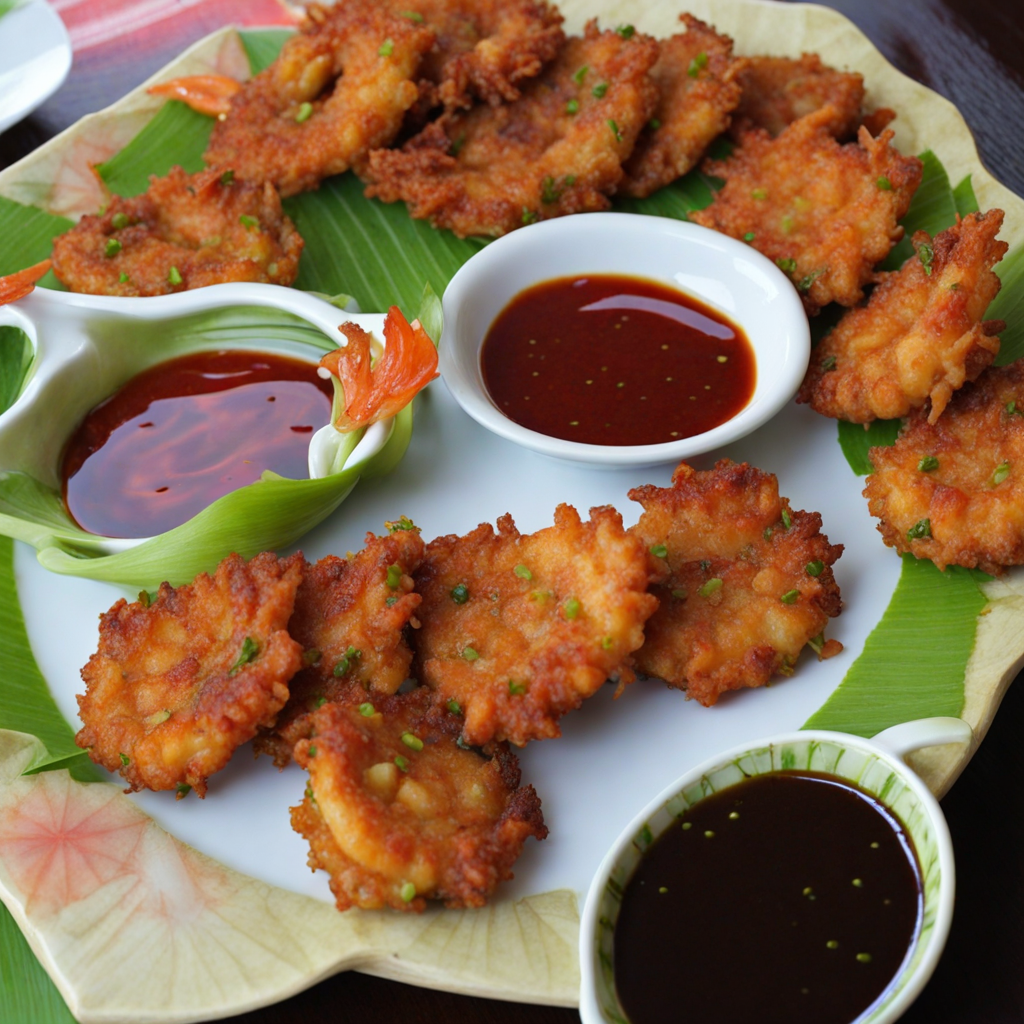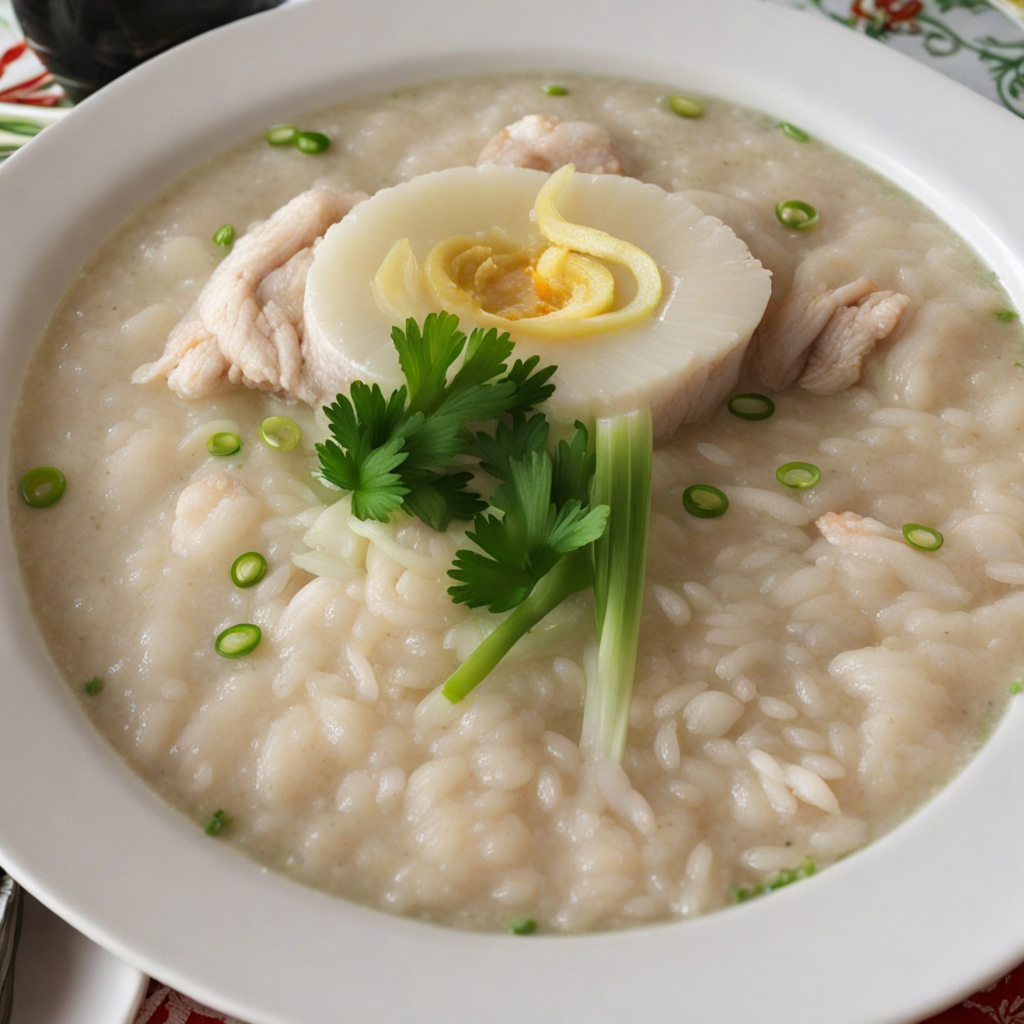Adobo
Adobo is a beloved Filipino dish that embodies a unique blend of flavors, making it a must-try for anyone seeking to explore the culinary traditions of the Philippines. At its core, adobo is a method of marinating and cooking meat, commonly chicken or pork, in a savory mixture of soy sauce, vinegar, garlic, bay leaves, and black pepper. This combination creates a rich, tangy, and slightly sweet flavor profile that is both comforting and satisfying. The slow-cooking process allows the ingredients to meld together, resulting in tender meat that absorbs the aromatic essence of the marinade. The versatility of adobo is one of its most appealing aspects. While traditional recipes often feature chicken or pork, you can also find variations that use beef, seafood, or even vegetables. Each region in the Philippines has its own twist on adobo, incorporating local ingredients and cooking techniques, which means you can enjoy a different experience with each version. Some may add coconut milk for a creamy texture, while others might include hard-boiled eggs or potatoes to enhance the dish's heartiness. Served with steamed rice, adobo is a comforting meal that resonates with many Filipinos as a staple in their households. The sauce is typically rich and flavorful, making it a perfect complement to plain rice that soaks up every drop. As you take your first bite, you'll experience a delightful medley of tangy, salty, and savory flavors that dance on your palate, leaving you craving more. Whether enjoyed at a family gathering or as a street food favorite, adobo captures the essence of Filipino cuisine and invites food lovers to savor a taste of the Philippines.
How It Became This Dish
The Rich History of Adobo in the Philippines Adobo is more than just a dish in the Philippines; it embodies the complex tapestry of Filipino culture, history, and culinary ingenuity. Renowned for its bold flavors and versatility, adobo has become a national dish that resonates deeply with the Filipino identity. To understand adobo is to appreciate the layers of history and cultural significance that have shaped it over centuries. #### Origins: The Birth of Adobo The origins of adobo can be traced back to the pre-colonial era, before the arrival of Spanish colonizers in the 16th century. The term "adobo" is derived from the Spanish word "adobar," which means "to marinate." However, the practice of marinating and preserving food with vinegar, salt, and spices is an ancient technique that existed in various forms across Southeast Asia. Filipinos were already utilizing local ingredients such as vinegar, soy sauce, garlic, and pepper long before Spanish influence permeated their food culture. Historical accounts suggest that indigenous peoples cooked meat in vinegar as a means of preservation, especially in a tropical climate where food spoilage was a constant concern. The natural acidity of vinegar not only extended the shelf life of meat but also imparted a distinctive flavor that would become synonymous with adobo. #### Spanish Influence: A Culinary Fusion When Spanish colonizers arrived in the Philippines, they encountered this indigenous method of food preservation and took note of its popularity. Spanish settlers introduced their own culinary techniques and ingredients, including the use of spices and additional forms of marination. Over time, what we now recognize as adobo evolved into a fusion of local and Spanish influences. The classic adobo we know today typically features pork or chicken marinated in a mixture of vinegar, soy sauce, garlic, bay leaves, and black pepper. While the Spanish introduced soy sauce—originally from China—the use of vinegar remains a distinctly Filipino element. This blend of flavors is what sets Filipino adobo apart from similar dishes found in Latin American cuisines, where adobo can often refer to a spice blend or sauce rather than a specific cooking method. #### Cultural Significance: Adobo as a Symbol Adobo holds a significant place in Filipino culture, serving as a culinary symbol of national identity. It is not just a dish; it represents the resourcefulness and adaptability of Filipinos throughout history. The capacity to transform simple, locally available ingredients into a flavorful, comforting meal reflects the resilience of the Filipino people. Adobo is also a dish that transcends regional boundaries. Each province, region, and even family has its own variation of adobo, showcasing the diversity of the Philippines’ culinary landscape. Some regions may prefer a sweeter adobo, while others lean towards a spicier or more tangy version. There are variations that include coconut milk (adobo sa gata), potatoes, or even hard-boiled eggs. This adaptability to local tastes and ingredients further emphasizes adobo's significance as a cultural staple. #### Development Over Time: From Home Kitchens to Global Palate As the Philippines underwent various historical phases—from colonial rule to American influence and eventual independence—adobo has remained a constant in Filipino households. It is a dish often served during family gatherings, celebrations, and even everyday meals, embodying warmth and hospitality. The phrase “Kain tayo ng adobo” (Let’s eat adobo) encapsulates the communal spirit of sharing a meal. In the 20th century, as the Filipino diaspora expanded across the globe, so did the popularity of adobo. Filipino immigrants brought their culinary heritage to new lands, introducing adobo to international palates. In places with significant Filipino communities, such as the United States, Canada, and the Middle East, adobo quickly became a beloved comfort food among both Filipinos and non-Filipinos alike. Filipino chefs and home cooks have also experimented with adobo, giving rise to modern interpretations that reflect contemporary culinary trends. Some chefs have incorporated global flavors, such as using wine or different types of vinegar, while others have presented adobo in fine dining settings, elevating the dish to new heights. Popular food festivals and events showcasing Filipino cuisine have further helped to spread the love for adobo, allowing it to shine on the global stage. #### Adobo in the Modern Era: A Culinary Renaissance In the 21st century, adobo has continued to evolve, becoming a canvas for culinary creativity. With the rise of social media, food bloggers, and influencers, adobo has gained visibility and popularity beyond traditional Filipino communities. Recipes are shared, adapted, and reimagined, often incorporating local ingredients from various parts of the world. The advent of fusion cuisine has also led to innovative takes on adobo, such as adobo tacos or adobo ramen, which blend Filipino flavors with other culinary traditions. Moreover, adobo has become a symbol of advocacy for Filipino cuisine on a global scale. Culinary ambassadors are working to elevate Filipino food, showcasing its depth and diversity through events like “Adobo Festival” or “Filipino Food Month.” Chefs are organizing pop-up dinners that highlight adobo’s rich history while inviting diners to engage with the cultural narratives behind the dish. #### Conclusion: A Dish that Tells a Story Adobo is far more than just a recipe; it is a narrative woven through centuries of history, culture, and tradition. From its humble beginnings as a method of food preservation to its status as a national emblem of Filipino identity, adobo serves as a testament to the resilience, creativity, and spirit of the Filipino people. Each bite of adobo tells a story—a story of adaptation, fusion, and community. As the world continues to embrace the flavors of adobo, it reminds us that food is not just about sustenance but also about connection, culture, and history. Adobo is a dish that brings people together, transcending borders and serving as a delicious ambassador of Filipino heritage. Whether enjoyed at a family gathering in the Philippines or in a trendy restaurant halfway across the globe, adobo will forever hold a special place in the hearts and palates of many.
You may like
Discover local flavors from Philippines







